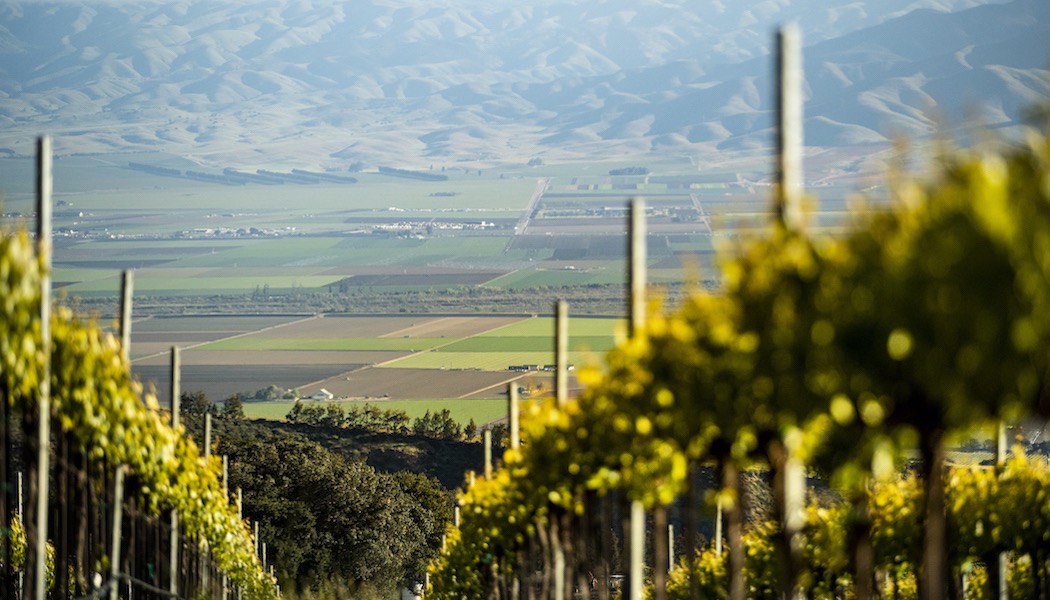
Santa Lucia Highlands Packs a Punch
DallasWineChick.com
Melanie Ofenloch
10/5/2020
Santa Lucia Highlands Packs a Punch
BY MELANIE OFENLOCH | OCTOBER 4, 2020 | BLOG
http://www.dallaswinechick.com/santa-lucia-highlands-packs-a-punch/
by Melanie Ofenloch
Santa Lucia Highlands AVA, Courtesy of Santa Lucia Highlands Wine Artisans
There exists a small, but dynamic, wine region within the Santa Lucia Mountains near Monterey County on California’s Central Coast. Located on Highway 101, between San Francisco and Paso Robles, the Santa Lucia Highlands AVA, is only 18 miles long and 22,000 in total acreage, but it’s a region that has earned a name for single-vineyard Pinot Noirs and Chardonnay wines.
The Santa Lucia Highlands American Viticulture Appellation (AVA) was established in 1991 and today there are 50 vineyards with only 5,900 acres under vine due to the mountains. Of that acreage, approximately 58 percent is Pinot Noir, 36 percent is Chardonnay and the rest is Syrah, Riesling, Pinot Gris and other varietals.
The region is known for having one of California’s longest growing seasons because of the cool, coastal influences of fog and wind from the Monterey Bay, low annual rainfall of about 10-14 inches and strong daily wind averaging 10-15 miles per hour which is optimal for grape growing. Soils are a mix of granite-based alluvial deposits combined with gravelly, sandy loam. The vineyards are planted from 50-1,650 feet in elevation.
The area has a lot of history. In 1790, Spanish missionaries planted the first wine grapes in Santa Lucia, but the focus changed to vegetable farming until around the 1970s when a few grape growing families saw potential for the region.
Our tasting was moderated by Gwen McGill, the Executive Director of Santa Lucia Highlands Wine Artisans. We were joined by a variety of winemakers who talked about different aspects of the region. Gwen talked about how the unique climate helped the region during the recent fires (this chat was August 26) and how the marine layer and winds helped keep the wineries safe.
Steve McIntyre of McIntyre Vineyards emphasized the importance of Monterey Bay. “It is the most important climate influencer. The wind from the bay pulls cool air from the ocean, dries everything out and modulates high temperatures. Wind, fog and temperature are our terroir,” he said.
Another topic of discussion was the importance of the people. Mark Pisoni, Vineyard Manager of Pisoni Vineyards, whose family has been there for several generations, talked about the commonality of all being farmers. “People are important, and our region has fantastic multi-generational families,” he said. “I’m proud of to a farmer here and I love it. You have neighbors you can count on.”
We were shipped a variety of wines that showed the diversity and expressiveness of this region and I tasted some really good wines. However, the heat of a Texas Summer and the worst case consequences of shipping in the Summer happened so I’m still waiting for a few of the wines, so I’m going to be fair and talk about the wineries:
Bruliam Wines – Founded in 2008, Bruliam Wines is a boutique producer of ultra-premium, single vineyard wines sourced from California vineyards. The name is an amalgamation of their three children’s names – Bruno, Lily, and Amelia. The winery also has a focus on giving back and has made donations to over 80 unique charities selected by mailing list members and their restaurant partners.
Cattleya Wines — Formed in 2012 by Bibiana Gonzalez Rave, the name is a Spanish translation of the word “soul” and “Cattleya” into orchid (the national flower of Colombia) – her way of paying homage to her country. The label reflects that gorgeous orchid and she focuses on her love affair with the land and how its soul brings life into her wines.
Clarice Wine Company — Clarice is the newest project from Adam Lee, founding winemaker for Siduri and consulting winemaker for many other projects in California. Clarice Wine Company is a unique type of winery, combining aspects of an online wine community, a wine education website, and a limited-enrollment wine club (only 625 members). It more of an insiders club with access to Wine Industry Leaders from all fields of the wine business with a case of Clarice Pinot Noir included.
Hahn Family Wines — Nicky Hahn founded Hahn Family Wines and released its first vintage in 1980. He also led the effort to establish the Santa Lucia Highlands in Monterey County as its own distinct appellation. Hahn SLH wines showcases four Santa Lucia Highlands estate vineyards: Lone Oak, Smith, Doctor’s & Hook. Hahn Family Wines was one of the first wineries in the region to have all its estate vineyards certified under the rigorous Sustainability in Practice (“SIP”) Program.
Luli Wines is a partnership between a master sommelier, a distinguished vineyard manager and an expert winemaker. Sara Floyd, the sommelier, owns Swirl Wine Brokers. Brothers, Mark Pisoni, the grape grower, and Jeff, the winemaker. Luli wines are sourced from vineyards in or near the Santa Lucia Highlands, the Pisoni family’s home base.
Lucia Vineyard is the sister label of the Pisoni Estate wines. Whereas Pisoni Estate is single vineyards, Lucia is a collection of vineyards: Pisoni Vineyards, Soberanes Vineyard and Garys’ Vineyard (the latter two farmed in partnership with Gary Franscioni). The wines of Lucia are vineyard designated Pinot Noir, Chardonnay and Syrah in the Santa Lucia Highlands AVA. I’ve had a chance to write about these wines before and they always impress.
McIntyre Vineyards — Originally planted in 1973, the 80-acre site with 60 acres planted has some of the Highlands’ oldest Pinot Noir and Chardonnay vines. The winery’s other estate property is the 81-acre Kimberly Vineyard in Arroyo Seco. The McIntyßre Estate Vineyard was among the first properties in the Santa Lucia Highlands to be SIP Certified.
Miner Family Winery is located in Oakville, but produces small lots of more than two dozen bottlings, including Pinot Noirs sourced from the Santa Lucia Highlands (Garys’ Vineyard and Rosella’s Vineyard). Founded in 1998 by Dave and Emily Miner along with his parents Ed and Norma, the winery is known for its environmental focus with a solar-power and a waste-water recycling program.
Morgan Winery was founded in 1982 and is a family-owned and operated business. The winery is known for conscientious, innovative farming regimens allied with traditional, “minimalist” winemaking techniques, crafting wines of balance, elegance and distinction. Winegrower Dan Lee and winemaker Sam Smith collaborate to craft wines which express the terroir from Morgan’s organically grown Double L Vineyard and select vineyards in the Santa Lucia Highlands and northern Monterey appellations.
Scheid Vineyards — Al Scheid first purchased property in Monterey County in early 1972. For the first 15 years, Scheid Family Wines was known as Monterey Farming Corp., a grape grower that sold all of its production to winery clients. Today they own 12 estate vineyards located along a 70-mile stretch of the Salinas Valley and produce their own brands as well as their small production wines of Scheid Vineyards.
Talbott Vineyards crafts estate-grown Chardonnay and Pinot Noir inspired by the traditions of Burgundy. With two estate vineyards located in Monterey County, Sleepy Hollow Vineyard and Diamond T Vineyard, the winemaking team is led by head winemaker David Coventr.
WALT Wines, owned by Vintner Kathryn Walt Hall and Craig Hall, who originally come from Dallas, is dedicated to the production of premier Pinot Noir and Chardonnay from the Pacific Coast’s most distinctive vineyard sites. I’ve had the chance to interview them several times for big milestones and the wines are exquisite.
Wrath Wines — Wrath produces site-driven Pinot Noir, Chardonnay, Syrah, and Sauvignon Blanc from its estate vineyard and respected properties in the Santa Lucia Highlands. It is a small production winery with small distribution. To preserve the local ecosystem, Wrath has developed a sustainable farming program, which is SIP certified.
Looking at the Santa Lucia Highlands region — the size of Manhattan –with a collection of renowned names in the wine industry who have discovered its potential as well as a slate of multi-generational families who have banked their legacy on the future.


